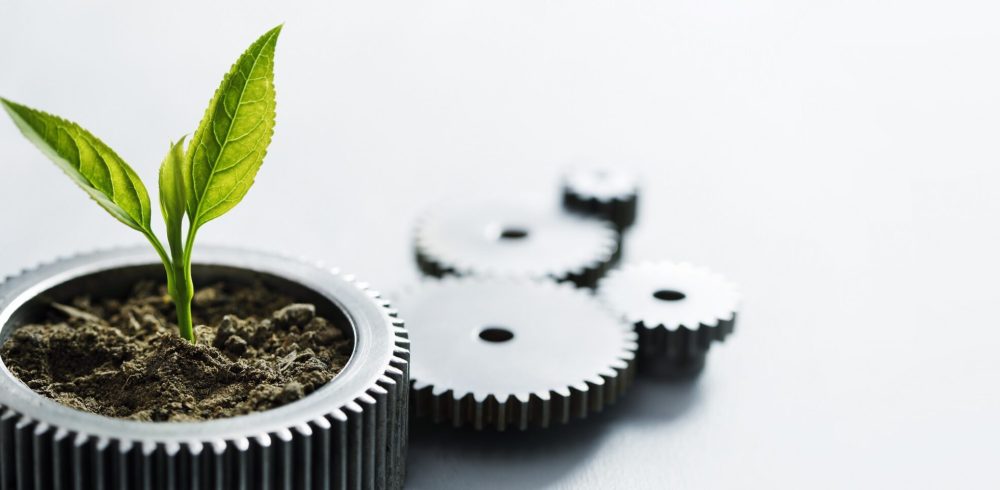Rising energy costs, water scarcity and climate change – in view of today’s major challenges, industrial manufacturers are trying hard to keep costs down and raise sustainability performance.When it comes to high precision cleaning, vapor degreasing with solvents in a closed cleaning system has long set the standard for sustainability. Unfortunately, this is often overlooked due to misconceptions about solvents.
If an objective view is taken on energy usage, solvent recyclability, waste disposal, as well as chemical impact on the environment, the conclusion is clear: solvent cleaning in closed cleaning equipment not only can help manufactures cut costs in the long run – in many cases it even demonstrates a better environmental profile than many other alternatives promoted as “green”.
- Virtually no air emissions when used in modern sealed plants
In the past, solvent losses into the air from open top machines used to represent a major portion of organic pollution. However, great technological advances in closed solvent cleaning systems over the decades are leading to environmentally sound and responsible cleaning options.
Modern closed cleaning machines running in vacuum conditions – for both chlorinated and non-halogenated solvents – means that there is virtually no emission in the cleaning process.
The application can be fully bundled with closed loop solvent delivery systems which can prevent emission during transfer and handling of solvents from and into the machine.
A European Commission Report from as early as 2006 shows that in order to remove 100 kg of oil, the use of a closed cleaning machine – compared to an open machine – can already dramatically reduce the amount of solvent required by almost 5 times, from 754kg to 160kg.

Source: Chemical product services in the European Union, European Commission, January 2006
With the support of Chemical Product Services (CPS), such as consistent solvent monitoring and stabilization, along with the SAFE-TAINER™ System for the safe transport, handling and storage of both fresh and used solvents, the amount of solvent needed can be further reduced by over 90%, dropping from 160kg to a mere 15kg. Process optimization can bring down solvent consumption further still.
Both emissions and wastage volumes also drop significantly, while user safety standard and environmental protection are heightened at the same time.
- Minuscule solvent consumption and long bath life
In modern closed cleaning machine, used solvent can be constantly re-purified and nearly completely recycled in the distillation unit. This routine recycling means there is very low solvent replacement volumes necessary. It also reduces health and safety risk, and brings in cost savings not only in terms of solvent consumption, but also time, labor and paperwork due to minimal wastage.
Nevertheless, since more work demand is made on less solvent input, the stress on solvents could increase. Regular monitoring and maintenance of the solvents can therefore help extend solvent lifespan, and in return, the bath life cycle.
- Low waste volume
Since solvents can be effectively recycled and reused following distillation, the waste volumes are much lower. Compared to aqueous cleaning, solvents can be easily separated from oils by distillation. The higher the temperature difference between solvent and oils in their boiling points, the better the separation by distillation.

If there is a significant amount of oil that needs to be removed in the cleaning process, the good distillation behavior of solvents can be a great advantage which can ensure minimal wastage and reduced carbon footprint.
With chlorinated solvents such as Perchloroethylene, as little as 1% (or even lower) of solvent residue can be found in the waste stream. Assuming that there are 10,000 kg of oil entering the cleaning machine annually which need to be cleaned off, this would result in just about 100 kg of solvent residue in the waste stream, and therefore an approximate total of 10,100 kg of waste per year.
- Low energy usage
Thanks to their low surface tension and viscosity, solvents dry quickly and completely, leaving no moisture or residue on parts after they exit the vapor degreaser. In comparison, energy required to dry metal parts after aqueous cleaning can be 10 times higher.
During the distillation process, solvents also require much less energy to heat to boiling temperature because of their lower specific heat capacity. It also requires less energy for it to evaporate, as illustrated in the table.

Many manufacturers are coming under significant corporate pressure to move away from solvents to water-based cleaning in the name of achieving greater safety and sustainability. What is troubling is that sweeping decisions are often made based on a distorted view on how solvents work. The performance of the solvent itself is just as crucial as the process and system within which it is used. Of course, not all metal cleaning applications would be a match for solvents, as the choice of the right cleaning agent always depends on the specific requirements and the context. But where the required cleanliness can be achieved with solvents, they can be a viable choice – and one that can drive your sustainability performance and help save costs in the long run.
Manufacturing & Engineering Magazine | The Home of Manufacturing Industry News














